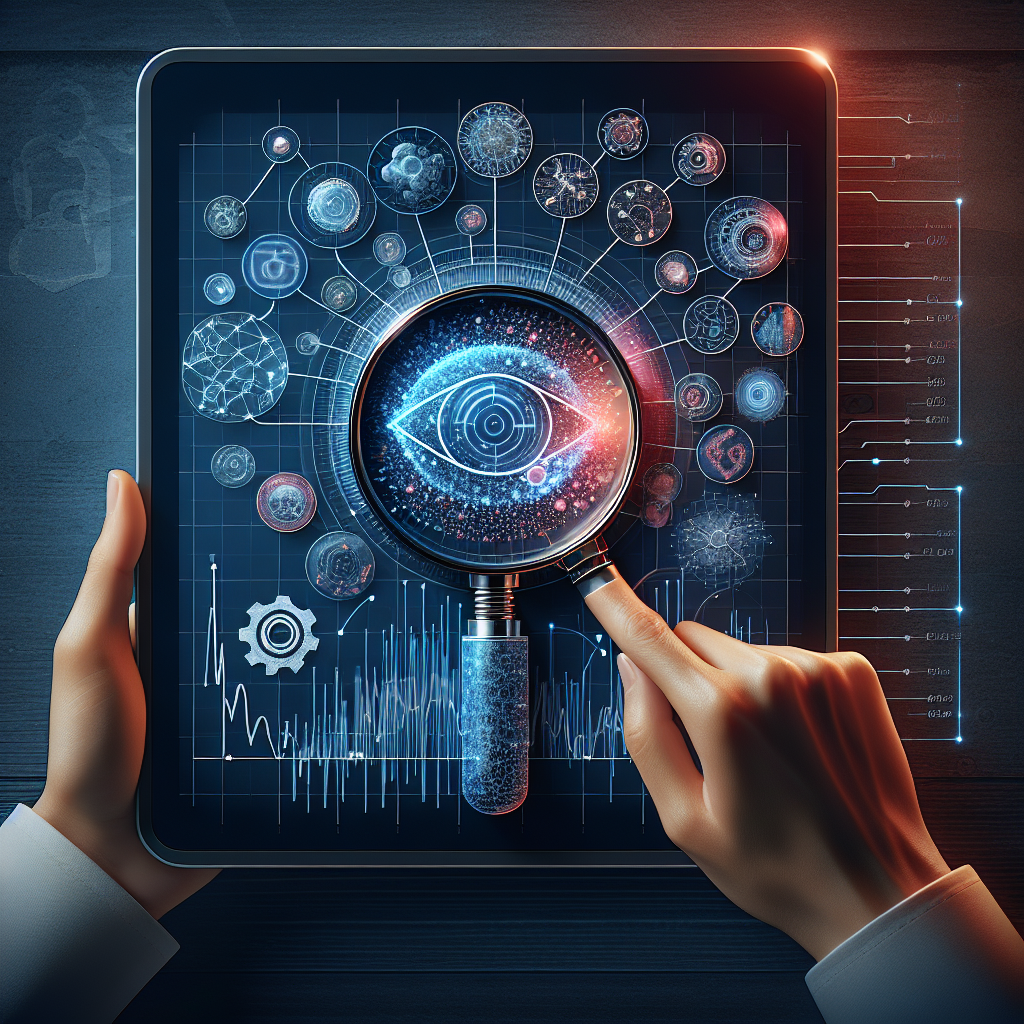Introduction: The New Frontier in Data Analysis
In today’s data-driven world, businesses are continuously on the lookout for efficient ways to analyze vast streams of information. Anomalous patterns—those deviations from the norm—can indicate critical issues or opportunities. Enter the age of AI-driven anomaly detection tools, a game changer that leverages sophisticated algorithms to automate the identification of these irregularities. In this article, we will explore some of the top AI tools transforming anomaly detection and bring insights that can drive impactful decisions.
Understanding Anomaly Detection: A Primer
Before diving into the tools, it’s vital to understand what anomaly detection entails. At its core, anomaly detection aims to identify data points that deviate significantly from the expected pattern. This could signal fraud, operational disruptions, or even reveal new market trends. By utilizing AI, organizations can systematically improve the speed and accuracy of this process.
The Role of AI in Anomaly Detection
Artificial Intelligence enhances traditional anomaly detection techniques by incorporating machine learning algorithms that learn from historical data. Unlike conventional approaches that may rely on rule-based methods, AI adapts to changing data patterns, making it far more effective at identifying complex anomalies in real-time.
1. Google Cloud AI
One of the leaders in the field, Google Cloud AI, provides powerful tools for automating anomaly detection without requiring extensive coding knowledge. Its BigQuery ML feature enables users to create and execute machine learning models directly within their data warehouse, allowing seamless integration. Businesses can create custom models to fit their specific needs, improving accuracy and efficiency in anomaly detection.
2. Microsoft Azure Anomaly Detector
Microsoft Azure offers the Anomaly Detector API, a simple tool that analyzes time-series data to pinpoint irregularities. With its capacity for real-time detection, businesses can respond quickly to issues as they arise. The user-friendly interface and comprehensive documentation make it a strong choice for companies looking to get started with AI-powered anomaly detection.
3. IBM Watson
IBM Watson provides advanced analytics capabilities, including anomaly detection, through its Watson Studio platform. The platform’s robust machine learning capabilities allow businesses to build tailored models that can predict anomalies based on a multitude of factors. Its integration with other IBM services provides a complete ecosystem for enhancing data insights.
4. DataRobot
DataRobot stands out for its user-friendly interface and automation. Designed for both data scientists and business users, it offers pre-built algorithms for various models, which can be easily deployed. DataRobot uses automated machine learning to quickly iterate over multiple models, ensuring businesses can find the most accurate solution for their anomaly detection needs.
5. Amazon Lookout for Metrics
Amazon Web Services (AWS) has launched Lookout for Metrics, a powerful tool that can identify anomalies in various business metrics. This tool is trained using historical data, enabling it to automatically detect when performance deviates from normal levels. Organizations can set critical thresholds, receiving notifications for significant changes that require attention.
6. SAS Visual Analytics
SAS offers robust analytics solutions, with Visual Analytics serving as a standout feature for anomaly detection. The platform allows businesses to visualize their data while leveraging AI to highlight unexpected variations. SAS’s reputation in the analytics industry adds a layer of trust, making it a go-to for many enterprises.
7. H2O.ai
H2O.ai focuses on making machine learning accessible and easy to implement. With its Driverless AI platform, users can create models for anomaly detection without needing deep ML expertise. The platform’s automatic feature engineering and hyperparameter tuning help ensure optimal model performance.
8. Kx Technologies
Kx Technologies provides an analytics platform specifically built for time-series data and real-time processing, making it perfect for anomaly detection tasks. Their tools combine high-performance in-memory computing with advanced analytics features, allowing businesses to detect anomalies as they happen.
9. MATLAB
For those familiar with coding, MATLAB offers advanced anomaly detection capabilities within its machine learning toolbox. With a variety of built-in algorithms, users can fine-tune models based on their specific data characteristics, providing versatility for complex detection needs.
10. TIBCO Spotfire
TIBCO Spotfire combines data visualization with advanced analytics, allowing users to identify anomalies interactively. Its intuitive interface enables non-technical users to explore data effectively, contributing to better insights and quicker action plans.
Real-World Applications of Anomaly Detection Tools
Understanding the theoretical benefits of these tools is essential, but so is examining their real-world impact. Organizations across industries, from healthcare to finance, are harnessing AI anomaly detection tools to enhance operations, mitigate risks, and drive profitability.
Case Study: Financial Services
In the financial sector, tools like Amazon Lookout for Metrics are employed to detect fraud. By analyzing transaction patterns, these tools can alert institutions to potentially fraudulent activities in real-time, protecting both consumers and businesses.
Case Study: Manufacturing
Manufacturers utilize IBM Watson to monitor equipment performance, ensuring any deviations from normal parameters trigger necessary maintenance before issues escalate into costly breakdowns.
Future Trends in Anomaly Detection
As technology advances, the future of anomaly detection looks promising. Enhanced integration of AI with other emerging technologies, such as the Internet of Things (IoT), will broaden the scope of anomaly detection across sectors. Moreover, improvements in explainable AI will lead to greater transparency in how anomalies are identified and addressed, building trust with end-users.
Conclusion: Embracing the Future of Data Insights
In a world where data is accumulating at an unprecedented rate, harnessing the power of AI tools for anomaly detection is not just a luxury—it’s a necessity. From improving operational efficiency to detecting fraud, these tools offer vital insights that can drive substantial business benefits. As we continue to explore and adopt these technologies, organizations that leverage AI for anomaly detection will undoubtedly be the ones to lead in their respective fields.








